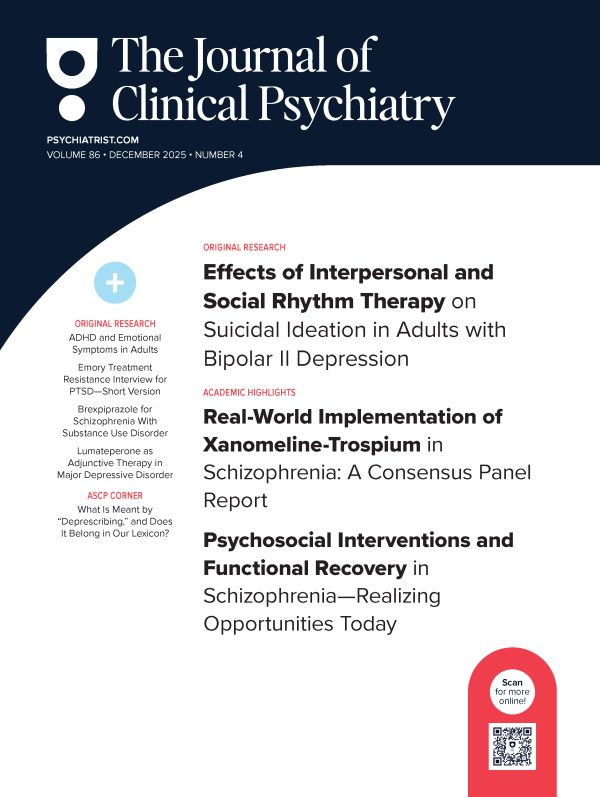Background: While acute-phase antipsychotic response has been attributed to 65%-80% dopamine D2 receptor blockade, the degree of occupancy for relapse prevention in the maintenance treatment of schizophrenia remains unknown.
Method: In this secondary study of an open-label, 28-week, randomized, controlled trial conducted between April 2009 and August 2011, clinically stable patients with schizophrenia (DSM-IV) treated with risperidone or olanzapine were randomly assigned to the reduction group (dose reduced by 50%) or maintenance group (dose kept constant). Plasma antipsychotic concentrations at peak and trough before and after dose reduction were estimated with population pharmacokinetic techniques, using 2 collected plasma samples. Corresponding dopamine D2 occupancy levels were then estimated using the model we developed. Relapse was defined as worsening in 4 Positive and Negative Syndrome Scale-Positive subscale items: delusion, conceptual disorganization, hallucinatory behavior, and suspiciousness.
Results: Plasma antipsychotic concentrations were available for 16 and 15 patients in the reduction and maintenance groups, respectively. Estimated dopamine D2 occupancy (mean ± SD) decreased following dose reduction from 75.6% ± 4.9% to 66.8% ± 6.4% at peak and 72.3% ± 5.7% to 62.0% ± 6.8% at trough. In the reduction group, 10 patients (62.5%) did not demonstrate continuous D2 receptor blockade above 65% (ie, < 65% at trough) after dose reduction; furthermore, 7 patients (43.8%) did not achieve a threshold of 65% occupancy even at peak. Nonetheless, only 1 patient met our relapse criteria after dose reduction during the 6 months of the study.
Conclusions: The results suggest that the therapeutic threshold regarding dopamine D2 occupancy may be lower for those who are stable in antipsychotic maintenance versus acute-phase treatment. Positron emission tomography studies are warranted to further test our preliminary findings.
Trial Registration: UMIN Clinical Trials Registry identifier: UMIN000001834
Members Only Content
This full article is available exclusively to Professional tier members. Subscribe now to unlock the HTML version and gain unlimited access to our entire library plus all PDFs. If you’re already a subscriber, please log in below to continue reading.
Please sign in or purchase this PDF for $40.00.
Already a member? Login





